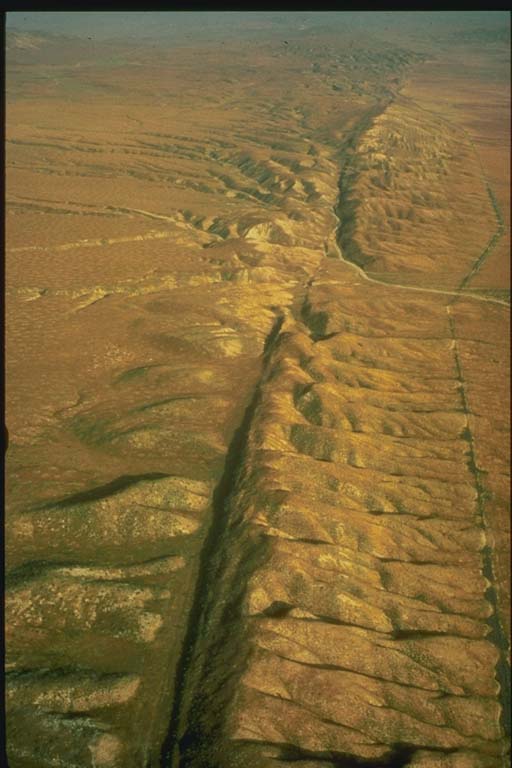| Faults Images |
 |
Through the study of faults and their effects, much can be learned about the size
and recurrence intervals of earthquakes. Faults also teach us about crustal movements
that have produced mountains and changed continents. Initially a section of Earth's
crust may merely bend under pressure to a new position. Or slow movement known as
seismic creep may continue unhindered along a fault plane. However stresses often
continue to build until they exceed the strength of the rock in that section of crust.
The rock then breaks, and an earthquake occurs, sometimes releasing massive amounts
of energy. The ensuing earth displacement is known as a fault. This slide set describes
the mechanism and types of faulting. It illustrates a variety of fault expressions
in natural and manmade features. |
|